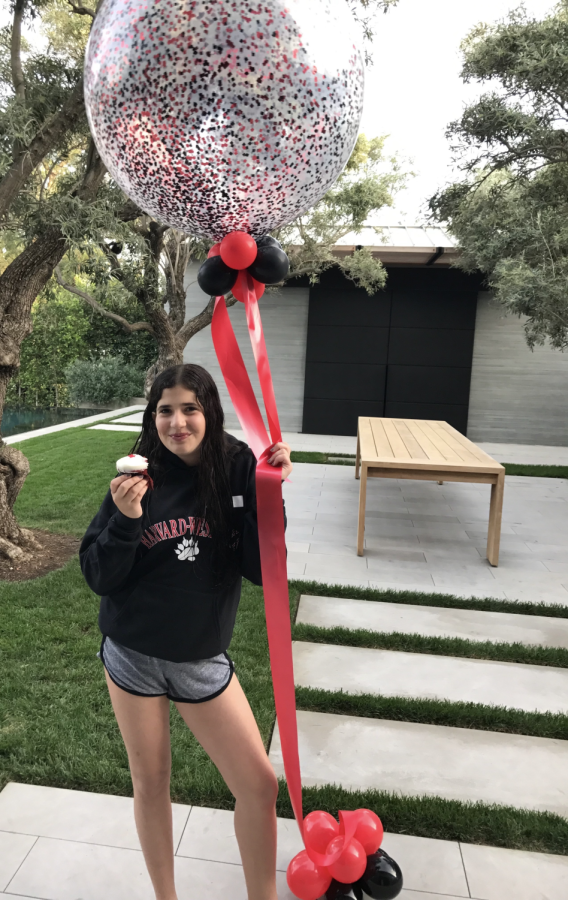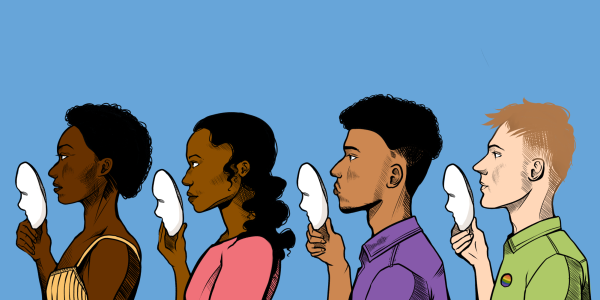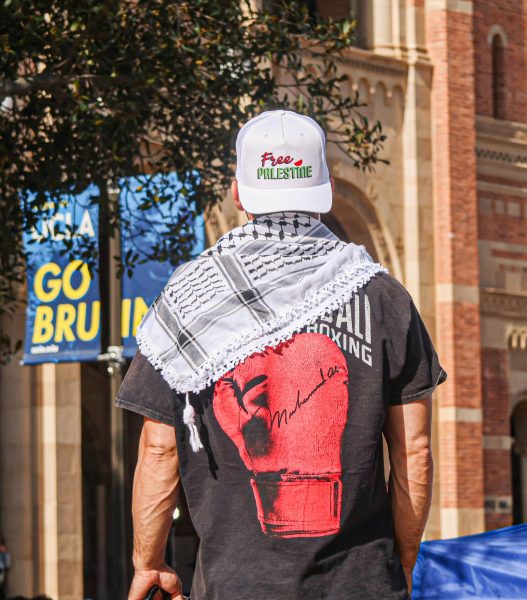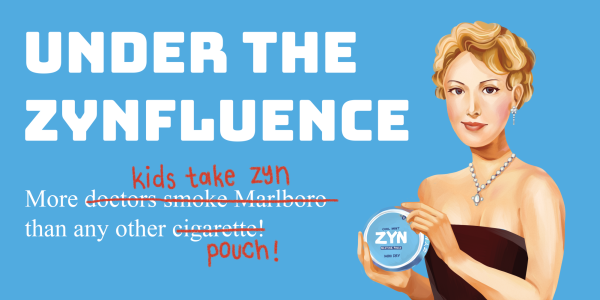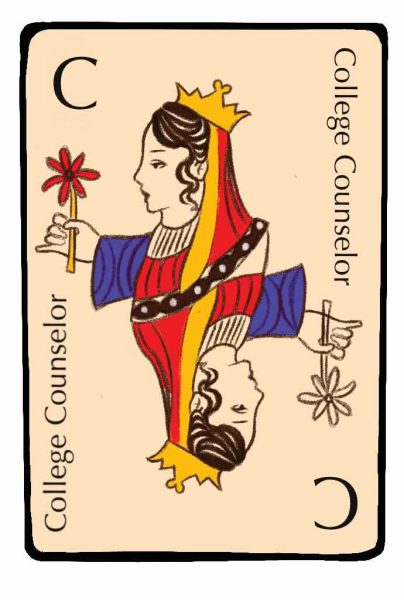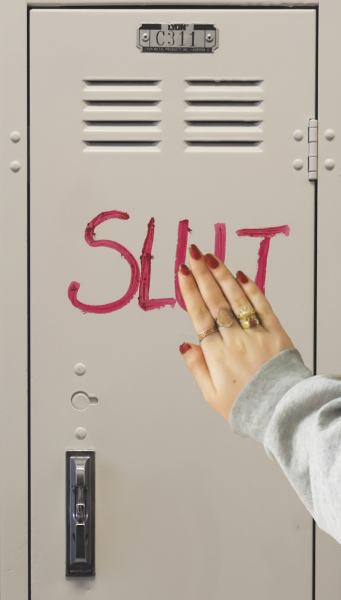Highway to Harvard-Westlake
Administration, staff and students discuss the impact of developments in the school’s admissions process in recent years.
Printed with permission of Claire Paul
Claire Paul ’23 smiles with a cupcake as she celebrates getting accepted into the school before seventh grade.
February 9, 2023
Sixty anxious sixth-graders sat in a crowded boardroom facing a PowerPoint presentation at the Center for Early Education (CEE) in the fall of 2022. Greg Gonzalez, Interim Head of Admission and Enrollment at the school, paced in front of a picture of the lower school campus, describing the school’s academic, athletic and performing arts centers of achievement and excellence.
Gabby McHale, Director of Student Placement at CEE, oversees the admissions process of the sixth-grade class as they apply to middle schools. McHale said because CEE is a feeder school, students there might experience advantages when applying to a school with which CEE has a close relationship.
“We now invite the schools to come and make presentations to our sixth-grade students,” McHale said. “We do that with maybe 15 or 16 schools so that students have an opportunity to learn about a lot of different schools and have a special opportunity to connect with the admission department from each of the schools.”
McHale said in the past year, she has noticed an effort by Gonzalez to expand the school’s reach to more elementary schools across L.A. and form strong relationships with them as the school has done with CEE.
“Gonzalez has done a really good job of visiting schools that maybe weren’t visited before, and sort of creating new relationships,” McHale said. “And I think that’s always really important. One of the reasons [CEE] has been able to send so many students is because we have a great relationship with the school and it’s a really good next step for so many of our students.”
According to the admissions page on the school’s website, the school admits students from over 240 different schools, including public, religious, independent and international institutions. Gonzalez said during the fall and winter, he visited elementary schools and organizations across Los Angeles.
“I tried to see schools that traditionally send us lots of applicants and then perhaps go to a school that doesn’t send us as many applicants just to broaden our reach,” Gonzalez said. “We’re really invested in reaching the whole city and drawing the best applicants to our school.”
Traditionally, one part of the school’s application process has been an on-campus interview with a member of the Admission Office, administrator, coach or faculty member. As a result of the COVID-19 pandemic, the school began to conduct interviews over Zoom. Gonzalez said the Admissions Office decided in June of 2022 to make interviews online for the foreseeable future.
“We made that decision only because we just weren’t sure what was going to happen with COVID,” Gonzalez said. “Zoom just gave us flexibility. It would have been very hard to ensure physical space and physical safety this year unless we had online interviews.”
Upper School Dean Sharon Cuseo interviews prospective students throughout the admission process. Cuseo said because of the age of applicants, applications typically reveal less about the student, so interviews are a carefully considered part of the admissions process.
“The interview at Harvard-Westlake probably has more weight than the interview for college,” Cuseo said. “Part of that has to do with the fact that we have less information [about applicants] because they are 11 or 12 years old. Most of their grades are good, what their parents write is glowing and their recommendations are good, so [the interview] is one of the differentiating factors.”
Cuseo said the goal of the interview is to have a conversation and learn more about the applicant beyond their transcripts and extracurricular activities.
“I’ve interviewed for both Harvard-Westlake and colleges, and [interviews themselves] are remarkably similar,” Cuseo said. “The best interviews are just really great conversations, and the more conversational it can be, the more at ease the student will be and the better the interview goes. In interviews, we just try to figure out questions that provide deeper insight into their lives and personality.”
President Rick Commons said the school received a record number of applications for the 2023-2024 school year.
“This year our total number of applications was 1,378,” Commons said. “It’s our highest ever, and it’s higher than our previous [record] by almost 100. It’s around six or seven percent higher than we’ve been in the past, which is great. It’s great that our school is highly sought after, as we are a place that is built for students who are excited about school, what they can learn and opportunities to try new things.”
The school admits 25%-33% of its applicants, according to the admissions website. Commons said because the applicant pool is so competitive, the school often has to reject students who would succeed.
“We have lots and lots of talented kids applying, which we hope continues, but that puts us in a position of having to say no to kids who would probably do very well here,” Commons said. “It’s a privileged position to be selective, and I think it’s important to the future of our school. We want to continue selecting not only for talent but also character and kindness.”
Gonzalez said there is no formula or perfect application that will lead to acceptance into the school.
“I hear a lot about a ‘Harvard-Westlake’ student,” Gonzalez said. “One of the best things about our school is that there isn’t a singular ‘Harvard-Westlake’ student. There are many types of Harvard-Westlake students.”
Gonzalez said a student will be a better candidate if their application and interview demonstrate that they are dedicated to learning, and coming from a feeder school does not favor an acceptance.
“What makes a good student for the school?” Gonzalez said. “I think number one, they have to be nice because we want nice people on campus. Number two, they have to really like school. Our students like being at school. Their idea of school isn’t just drudgery and classes, but it’s enlightening and engaging. They have to want to be at school and want to spend a lot of hours at school. And then finally, I think all of our students work hard. There’s a baseline of work that they have to do.”
Like Gonzalez, Cuseo said the school takes into account the personality of applicants, and that this consideration has become a priority in recent years.
“What I love is that we are paying more attention now to wanting nice students,” Cuseo said. “I think we would be more likely now to look at a kid with perfect stats, and if they didn’t come across as a nice, open-minded and inclusive person, we don’t need that.”
The COVID-19 pandemic has also resulted in the school’s Admission Office switching to an ISEE test-optional policy, just as many colleges have made the SAT and ACT optional. Though the school has opened its campuses for standardized testing, Gonzalez said the admissions department is not certain if ISEE scores will be mandatory for next year.
“We’re developing data regarding student performance and the depth of our applicant pool with and without ISEE test scores,” Gonzalez said. “There’s a lot to be discussed and debated, like if an SAT score is a good way to sum up a student. If we do go back to mandatory ISEE scores, we will read them, as we always have. It’s one slip of paper in a very large stack of papers. There really is no score that will guarantee admission or no score that would guarantee a lack of an offer.”
Gonzalez said the Admission Office is also working to emphasize the importance of the school’s diversity, equity and inclusion (DEI) policies to prospective families.
“DEI is front and center of our admission message,” Gonzalez said. “At every admissions event, we talk about what’s important to us. We discuss diversity and inclusion and we talk about the community that we build, sometimes in classrooms, in affinity groups, in clubs and in sports. Especially, we discuss how we’re able to build a pretty cohesive community out of a fairly large independent school.”
Lily Stambouli ’24, who previously attended Mirman School, said while coming from a large feeder school provided a sense of security when joining a new community, it also limited her outreach.
“I went [to Harvard-Westlake] with my two best friends, along with about 12 other students from my elementary school,” Stambouli said. “I think it was a good experience because I was able to have support while I was [adjusting to] this new environment. However, since I already had my close friends, I wasn’t that good at expanding my social circle, and as everyone else was making [new] friends, I was behind in that. But I ended up making some really great friends towards the end of seventh grade as I branched out from my Mirman friends.”
Stambouli said even though she came from a feeder school, she does not feel as though she had a significant social advantage compared to students who came from smaller schools with fewer students.
“I didn’t really feel ahead compared to kids who were the only students from their old schools,” Stambouli said. “Everyone was coming into a new environment, [and even] if you’re coming with 10 other people from your school, [going] from a grade with around 40 kids to a grade of 200 is a big jump. Everyone wanted to make friends in seventh grade, so I don’t think people were close-minded to the idea of accepting people even if they didn’t go to a feeder school.”
Unlike Stambouli, Nathalie Paniagua ’23 was the only student to come from her previous school. Paniagua said the Fast Start program organized by the Admission Office and the various opportunities to get involved at the school has allowed her to make friends.
“[College and high school admissions] are almost the exact same process,” Paniagua said. “You just really engage with the schools, and I think that that is basically the same process that I’ve been going through since the end of my junior year for colleges.”
Cuseo said students are more stressed while applying to the school than colleges because there are more options available after high school and students are often more open-minded during the college process.
“We often say to seniors who are applying to college that you’ve already gone through the more stressful application process because when students are applying to Harvard Westlake, there are so fewer options,” Cuseo said. “It’s more stressful [because] there are maybe five or six schools that you would consider, [while] there are 50 or 60 that you can consider when you apply to college. And very often, students are more nervous because they know they want to go here.”
Gonzalez said though some might find the school’s middle and high school application processes intense, he wants prospective families to remember the school’s emphasis on inclusion and kindness after their campus visits.
“I think the thing that people are impressed by when they first come to Harvard-Westlake are the buildings,” Gonzalez said. “But when they leave, they’re talking about the people. And I think that’s a really important thing to remember about admissions, that buildings are brick and mortar, but people, students, teachers and staff really breathe life into the school. That’s the impression we want to leave. It’s a beautiful place, but more importantly, we have very kind and welcoming people.”































